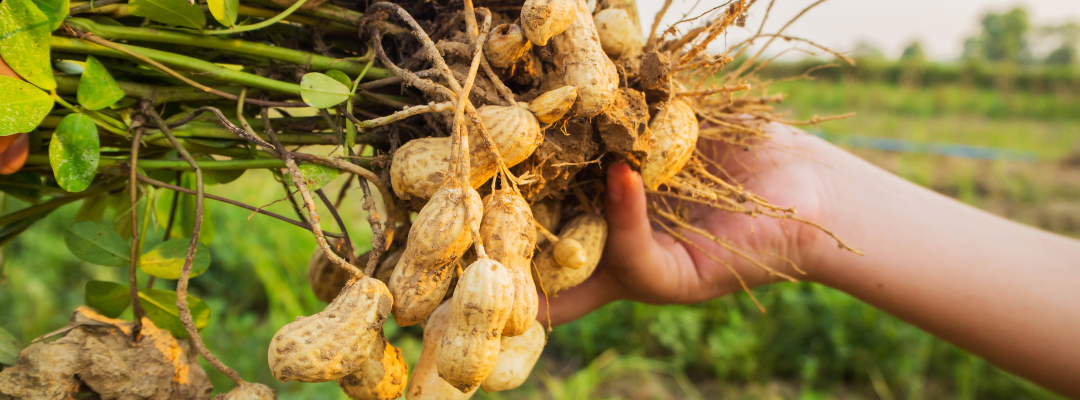U.S. peanut production decreased in 2022, driven by both lower acres harvested and lower yields. Peanut acres planted were down by 8% nationwide, to 1.46 million acres. Yields dropped by 2.7% from 2021 to 4,019 lb. per acre nationwide. Georgia – the largest producing peanut state – saw yields fall to 4,250 lb. per acre, a 200 lb. per acre drop, as its crop was affected by the tomato spotted wilt virus. The main driver of the lower nationwide yields came from drought-stricken Texas, which had a 21.6% decline in yield to 2,800 lb. per acre, its lowest value since 2011. Furthermore, Texas saw 25% of its planted acreage go unharvested due to the drought. Total peanut production in the U.S. is estimated at 2.8 million tons, a 12% decrease from 2021 (orange line in Figure 1).
On the demand side, peanut use is expected to decline by 4% this marketing year (bars in Figure 1). This is primarily due to a 7% forecasted decrease in exports. Food – which makes up the largest portion of peanut disappearance – is projected to increase by 1% from 2021. A 13% increase in peanut candy consumption kept peanut food use from falling much during the 2021-2022 marketing year, despite decreases in disappearance for peanut snacks, peanut butter, in-shell peanuts, and other edible peanut products. Over the first five months of the 2022-2023 marketing year (August through December), the quantity of peanuts used for peanut butter is at record levels, up 2.9% over the same period last year. This is crucial because over half the peanuts used for food end up as peanut butter.
Peanut carryover at the end of the marketing year is expected to decrease by 8% to 1.1 million tons. While peanut supply and demand factors are not the main drivers of peanut prices, peanut prices are expected to remain high amid the projected lowered peanut stocks. The expected price for the 2022-2023 marketing year is at $540 per ton, which would be the highest level in ten years. This comes as high prices for several alternative crops boost competition for peanut acreage this Spring.
Figure 1. U.S. Peanut Production, Stocks, and Disappearance by Year

Photo by Marina Leonova: https://www.pexels.com/photo/close-up-shot-of-peanuts-7717463/
Sawadgo, Wendiam. “2023 Peanut Market Outlook.” Southern Ag Today 3(8.1). February 20, 2023. Permalink














